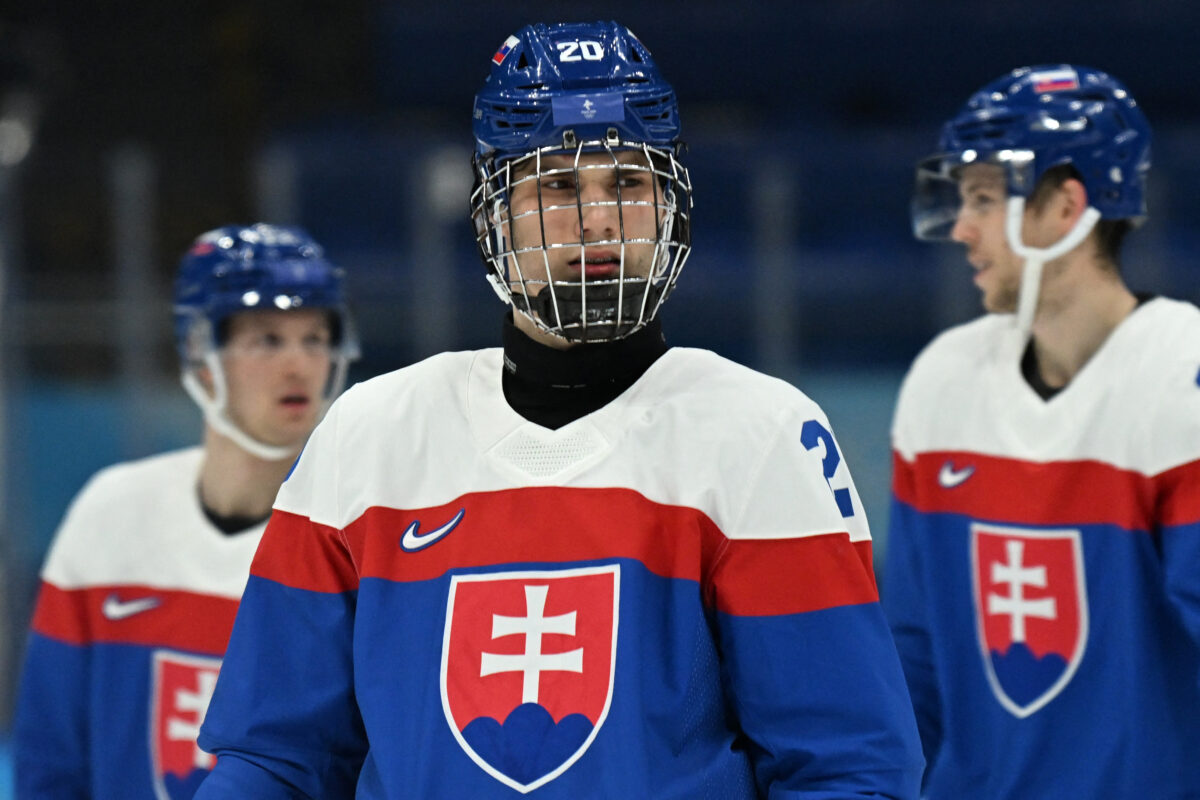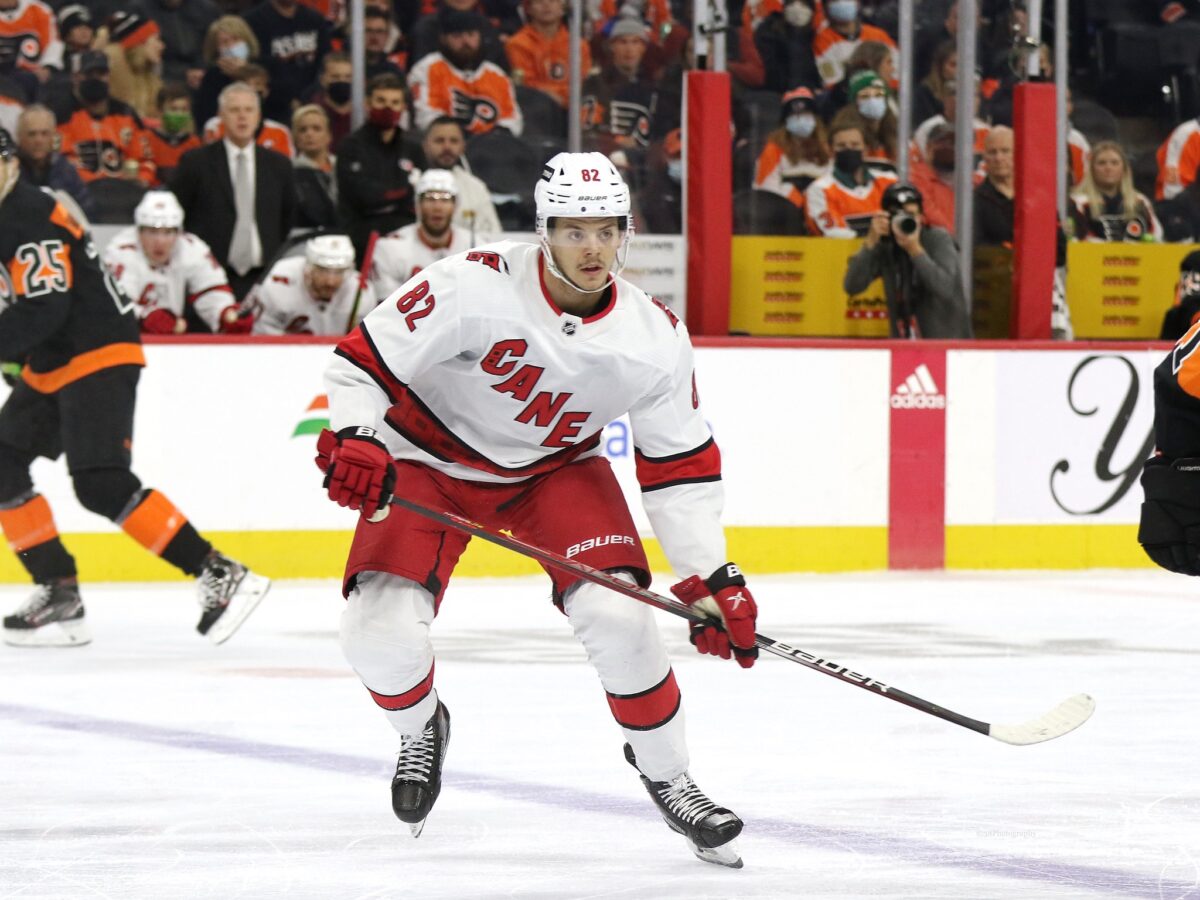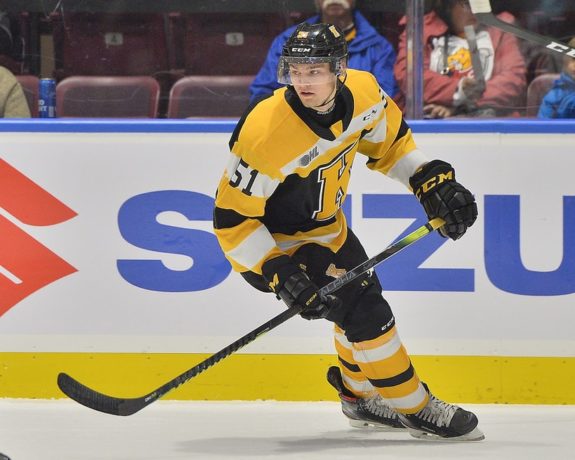This week, Montreal Canadiens general manager Kent Hughes will face a key decision in building the foundation of his plan to rebuild the franchise. Who to take with the first-overall pick in the 2022 NHL Entry Draft? The choice is not an easy one as there is a three-man race for that position: Shane Wright, Juraj Slafkovsky, and Logan Cooley. That being said, the third man, Cooley, is a distant third and the popular view is that the choice comes down to Wright vs. Slafkovsky.
These players play different positions, provide vastly different skill sets, and would complement the current young core already in place in Montreal. When Bob McKenzie released his final NHL Draft rankings, of 10 scouts polled, Slafkovsky had the vote to be No. 1 from five scouts and Wright was at the top of four scouts’ lists. This highlights just how close most lists have these two prospects, making it difficult to know who will be the choice beforehand. Using team needs won’t help narrow the choice as the franchise needs what each player provides. There are many aspects to factor into the decision, but which player will be the better fit?
Juraj Slafkovsky
Juraj Slafkovsky’s towering build commands presence all on its own. The 6-foot-4 220-pound, left-wing power forward is only 18 years old, and he may still grow a few inches before he fills out. When the season began, he was ranked in the second half of the top-10 prospects. His production in the Olympics and World Hockey Championships has made him a legitimate chance to be the Canadiens’ first pick. What impresses the most is the speed and offensive skills a player of his size can play with. He’s still a raw prospect in need of development, but the best-case scenario with him is a star, top-line power forward.

Internationally, he was impressive, scoring seven goals in seven Olympic games. He followed that up by scoring three goals and nine points in eight games in the World Championships. In his age group, he scored four goals and 11 points at the under-18 (U18) level.
After the Olympics, it is clear his confidence has grown, he began using his shot and size more, helping him offensively. In an interview on TSN, he confirmed this, stating:
“It’s hard to get the puck off me. I can keep it, I can skate with it and I can create. That’s what the best players are doing in the NHL.”
Juraj Slafkovsky
When asked why Montreal should pick him, he boldly stated, “(Nick) Suzuki and (Cole) Caufield need a left-winger. I’m sitting here if they want.” This may have been a thought that Hughes wanted to see for himself, and perhaps that is why he went to watch the young winger play at the World Championships.
Related: Canadiens Should Trade Up to Improve Prospect Pool
That being said, there is a concern with his potential floor, that is, the least he will become. It is expected that he will be an NHL player, based only on his size and mobility, but the concern is his overall production. His international play only tells half the story, his club play with TPS in Liiga shows another side. In 31 games of league play, Slafkovsky’s offensive numbers plummeted to five goals and 10 points. However, he did have a more productive playoff based on points per game, scoring two goals and seven points in 18 games.
By comparison, the 2018 third-overall pick, Jesperi Kotkaniemi played left wing for Assat and scored 29 points in 57 Liiga games. He also had an impressive showing in international play in his draft year, at the U18 World Junior Championship he outproduced Slafkovsky, scoring eight goals and 19 points in 17 games played. The Canadiens then relied on that international play and gambled that he would progress into a top-line center the franchise had needed for years. Instead, he was surpassed by Suzuki and eventually left the organization when he signed a predatory offer sheet from the Carolina Hurricanes.

The Canadiens cannot afford to make a mistake at the draft this year, and that prior error in picking a player that may not be a fit could be a cautionary tale. They can’t allow a couple of good showings at short international tournaments that were lacking in NHL talent or elite players in that age group to overlook his play in club games. While he may be the most physically prepared to play NHL games immediately, that is another aspect that should be a factor, but only a minor one as they must project out and predict if he will become the player that has the biggest impact on the Canadiens from this draft.
Shane Wright
With few exceptions, it has become common to see the player deemed to be the top prospect at the start of the season slide in the eyes of scouts while others rise and challenge for that coveted title. Case in point, Alexis Lafrenière in 2020. Even Auston Matthews, the top center in the 2016 Draft, faced a challenge to the top spot from winger Patrick Laine. In Shane Wright’s case, the slide in reputation came more so from questions about his play as opposed to just having a challenger step up his game.
Two large arguments are being made about Wright’s play. First, he is scoring less, down to 32 goals as a 17-year-old from 39 as a 15-year-old rookie. That is only seven fewer goals, however, he amassed 28 more total points. So, while his scoring was down, his offensive production was up as he factored into 33 percent of all goals scored by the Kingston Frontenacs.
Second, he lacks effort in his defensive play; his backchecking looks almost lazy at times. However, the system his coach, Luca Caputi, put in place was to allow his defense to play 1-on-1 in even-man rushes and have the first forward back provide a gap, allowing the defender to make a short pass and let Wright counterattack with transitional play. This “lack of effort” was also a criticism of Suzuki when he played in the Ontario Hockey League (OHL), and like Suzuki, Wright plays the game using his hockey IQ to predict plays. That being said, his overall defensive play needs more development to become what is expected of a top-six NHL centerman, but he has already proven he can play within a professional-style system.
There were also many games in which Wright created several excellent scoring chances per period that were not converted or his linemates weren’t able to read or react to the play in time. His skill sets would be beneficial when paired with a talented offensive player. In comparison to other players granted exceptional status to play in the OHL, Wright does fall a little behind. With 94 points in 63 games, he had 1.49 points per game in his draft year. John Tavares was at 1.86 and Conor McDavid was at 2.67. Had Wright not missed 18 months leading up to his draft year, would his points per game metric be higher and more competitive with even Tavares? This isn’t to say Wright will become a superstar NHL center, but he could at least become a top-line center.
With his high hockey IQ, his decision making on the ice is a strength, and it helped him dictate the pace and style of play consistently. Wright also plays a strong possession game, something the Canadiens have placed a high priority on. He is a play driver, leading transitional play and providing controlled zone exits and entries, making him an analytics darling, and that is another area the Canadiens have begun to place a high priority on.

Like with Slafkovsky, the Canadiens are doing their due diligence with Wright. Hughes has gone to Kingston to watch games in person, but unlike Slafkovsky, Wright has had a Combine interview as well as a dinner with the management team. This added layer allowed for more insight into the character of the player.
What may tip the Habs’ hand on who they’re targeting is the fact that, unlike Slafkovsky, it is known that Wright has also been in contact with head coach Martin St. Louis and advisor Vincent Lecavalier.
“They’ve been great. Really positive conversations with them at the combine as well with my meeting with them and then dinner with them, I’ve also had phone calls with Marty St. Louis and Vinny Lecavalier as well. Just kind of talking over their organization, what they’re looking for in a player, and what they expect out of their players. It’s been great so far.”
Shane Wright
While it is normal for teams to familiarize themselves with a top pick, it isn’t the known standard practice for a team to have continual contact with a player and have it done by so many staff members. Especially not a newly signed head coach as well as a trusted advisor who also just happened to be a first-overall pick himself. It would seem odd for them to put that level of effort in, only to end up picking another player.
In the end, consensus means nothing. The only scouting staff that matters is that of the Canadiens as it is their scouting staff making the list. Will Hughes and his scouting staff place a higher priority on a handful of games in the Olympics and Worlds or will they take the entire season into account? If they choose to prioritize international tournaments, they will choose to go with Slafkovsky who has a high-potential ceiling as a top-line power forward, but a lower potential talent floor as a serviceable third-line player. If they look at the entire season, that would be Wright, whose potential floor is still as a top-six center.
In five years, the Canadiens will need to look back at the pick and not regret it. Much like the New Jersey Devils can do with their now captain Nico Hischier in 2017 who may not be the best player in that draft class — that looks to be Cale Makar — but he is the “best fit” for their franchise. There is a lot of uncertainty in this year’s draft, and Hughes can’t risk failing with this pick. That is why the so-called “safe” pick in this draft is the player who has a larger sample size and pedigree to match and that has been in constant contact with the franchise, building a rapport. That player is most likely to hear their name first on the draft floor in Montreal. All signs point to that player being Shane Wright.